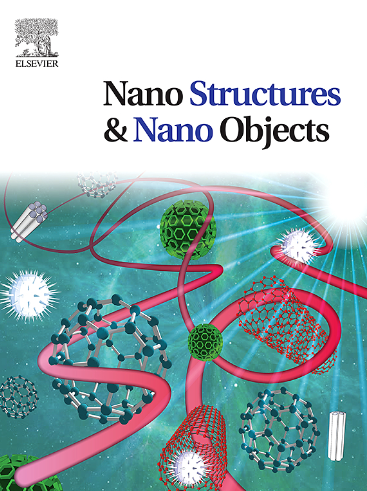Advances and significances of organic nanomaterials in optoelectronic applications
IF 5.45
Q1 Physics and Astronomy
引用次数: 0
Abstract
The remarkable mechanical strength, extensive surface areas, and adaptable optical characteristics of organic nanomaterials—such as fullerenes, carbon nanotubes, and graphene—make them ideal for use in nanocomposites, flexible electronics, and optoelectronic devices. But obstacles including thermal and chemical stability, environmental worries, and scalability problems prevent them from being widely used in real-world applications. By addressing these issues with better synthesis and manufacturing methods, these materials' stability, repeatability, and integration may be enhanced, opening the door for their profitable commercialization. The potential of organic nanomaterials to advance optoelectronics is investigated in this review paper.
有机纳米材料在光电应用中的进展及意义
有机纳米材料(如富勒烯、碳纳米管和石墨烯)具有显著的机械强度、广泛的表面积和适应性强的光学特性,使它们成为纳米复合材料、柔性电子和光电子器件的理想选择。但是,包括热和化学稳定性、环境担忧和可扩展性问题在内的障碍阻碍了它们在实际应用中的广泛应用。通过更好的合成和制造方法解决这些问题,这些材料的稳定性、可重复性和集成度可能会得到提高,从而为其有利可图的商业化打开大门。本文综述了有机纳米材料在光电子学发展中的潜力。
本文章由计算机程序翻译,如有差异,请以英文原文为准。
求助全文
约1分钟内获得全文
求助全文
来源期刊

Nano-Structures & Nano-Objects
Physics and Astronomy-Condensed Matter Physics
CiteScore
9.20
自引率
0.00%
发文量
60
审稿时长
22 days
期刊介绍:
Nano-Structures & Nano-Objects is a new journal devoted to all aspects of the synthesis and the properties of this new flourishing domain. The journal is devoted to novel architectures at the nano-level with an emphasis on new synthesis and characterization methods. The journal is focused on the objects rather than on their applications. However, the research for new applications of original nano-structures & nano-objects in various fields such as nano-electronics, energy conversion, catalysis, drug delivery and nano-medicine is also welcome. The scope of Nano-Structures & Nano-Objects involves: -Metal and alloy nanoparticles with complex nanostructures such as shape control, core-shell and dumbells -Oxide nanoparticles and nanostructures, with complex oxide/metal, oxide/surface and oxide /organic interfaces -Inorganic semi-conducting nanoparticles (quantum dots) with an emphasis on new phases, structures, shapes and complexity -Nanostructures involving molecular inorganic species such as nanoparticles of coordination compounds, molecular magnets, spin transition nanoparticles etc. or organic nano-objects, in particular for molecular electronics -Nanostructured materials such as nano-MOFs and nano-zeolites -Hetero-junctions between molecules and nano-objects, between different nano-objects & nanostructures or between nano-objects & nanostructures and surfaces -Methods of characterization specific of the nano size or adapted for the nano size such as X-ray and neutron scattering, light scattering, NMR, Raman, Plasmonics, near field microscopies, various TEM and SEM techniques, magnetic studies, etc .
 求助内容:
求助内容: 应助结果提醒方式:
应助结果提醒方式:


